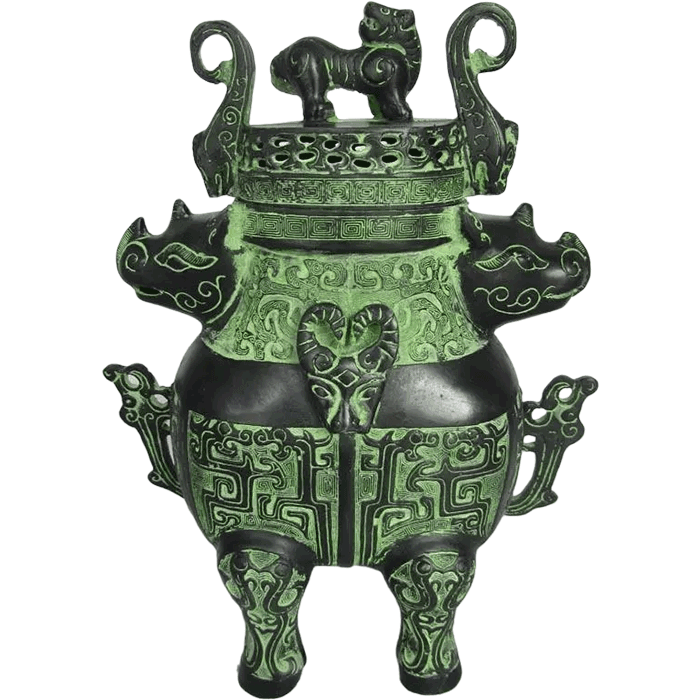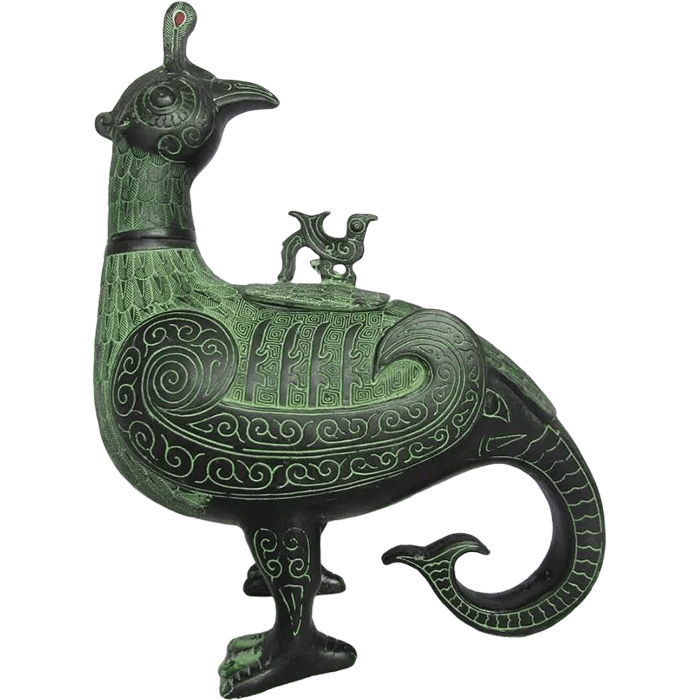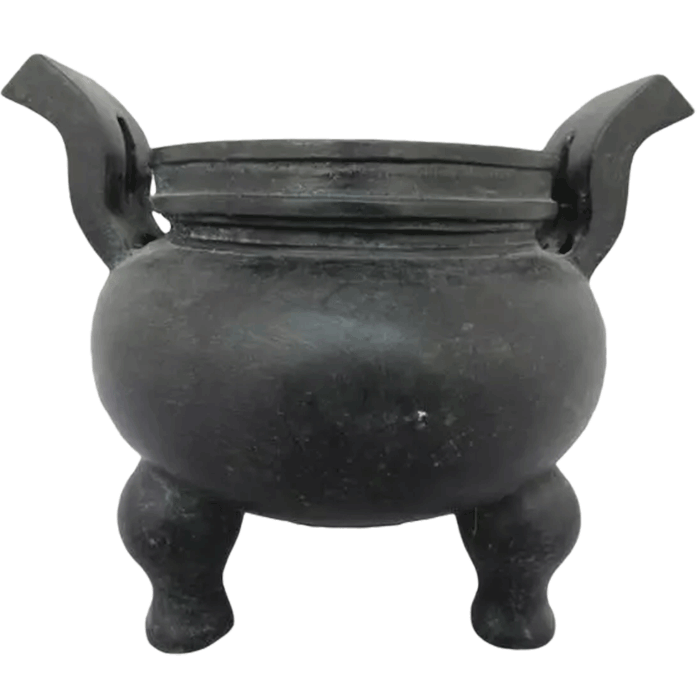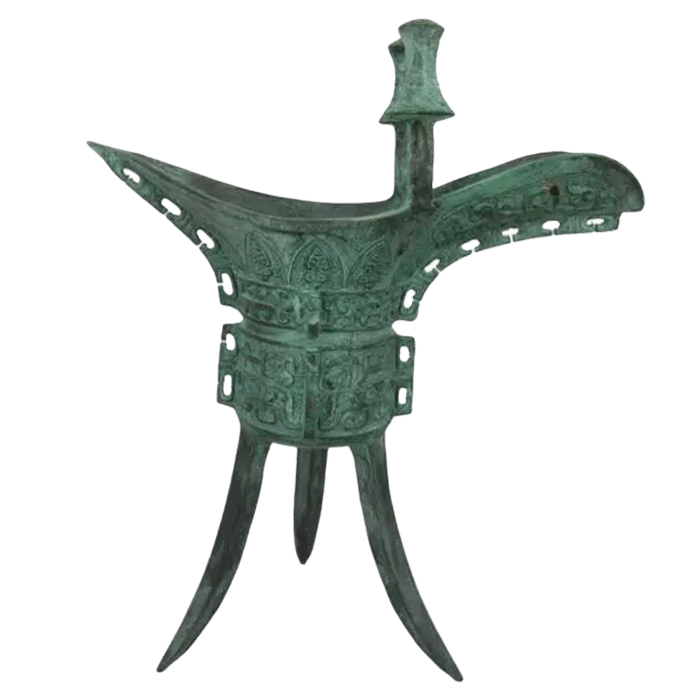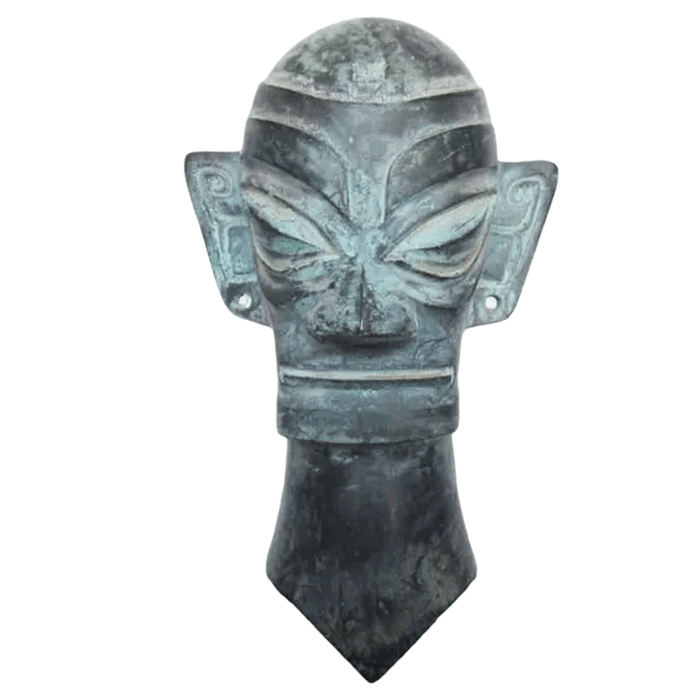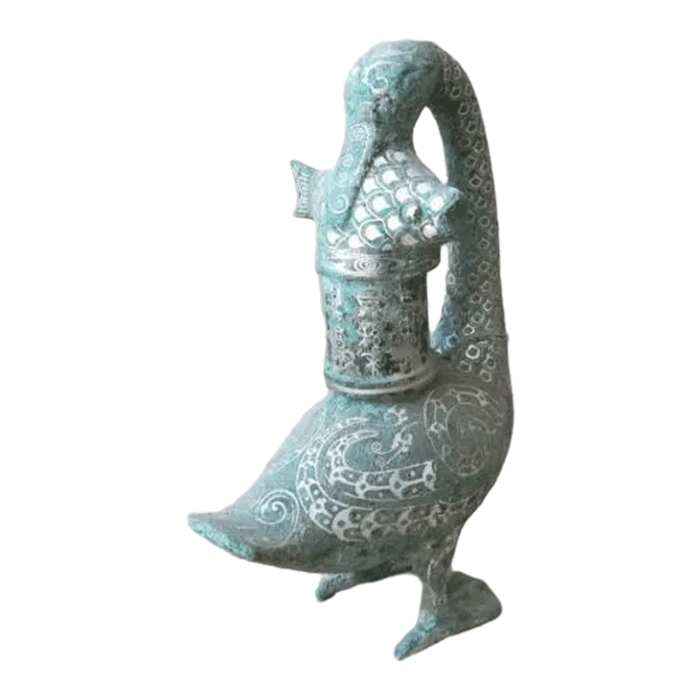The evolution of bronze culture over 2000 years
Recently, the "Bronze You Speak—Exhibition of Bronze Wares" hosted by the Jiangsu Provincial Bureau of Cultural Relics and undertaken by the Huai'an City Museum and the Jintan District Museum was exhibited at the Huai'an City Museum. There are 88 pieces of cultural relics, from the late Spring and Autumn period to modern times, and the categories include bronze wine vessels, weapons, and household utensils. Once a high-ranking ritual vessel, it has gradually developed into a daily-use vessel with a pyrotechnic atmosphere. The development and evolution of bronze over the past 2,000 years can provide a glimpse of the historical wisdom, social value and aesthetic appeal contained in bronze culture.
Many idioms and allusions are related to bronze
Chinese bronze wares are beautifully made and enjoy a high reputation and artistic value among bronze wares in the world. They represent the superb technology and culture of Chinese bronze development, and some idioms and allusions related to bronze have also emerged from this.
Most people are most familiar with the idioms related to "Ding", such as aspiring to the Central Plains, famous, three-legged, Zhongming Dingshi, strength to carry the tripod and so on.
Among the bronze wares, the "ding" is the main food utensil, which is equivalent to the current cauldron for cooking meat. It is mainly used for sacrifices and banquets. According to legend, after Dayu successfully controlled the water, he divided the world into Kyushu and cast nine tripods to symbolize Kyushu. Later, the kings of the Xia, Shang and Zhou dynasties all used Jiuding as an important weapon for passing on the country, and the tripod became a symbol of national power. The meaning of these idioms is also related to the original meaning or extended meaning.
A Vietnamese-style bronze tripod is exhibited this time. The Yue nationality is a branch of the Baiyue nationality. It has been in the southeast corner for a long time, and communicated with the princes and states of the Central Plains. The bronze wares of the Yue Kingdom present its unique cultural features. Strong regional cultural characteristics.
A large number of bronze weapons were cast in the Shang and Zhou dynasties. According to their uses, they can be divided into two categories. One is offensive weapons, including Ge, halberd, knife, sword, crossbow, dagger, etc., and the other is defensive. Type weapons, including helmets and armor. Ge is the most commonly used weapon in ancient times. The Ge exhibited this time is well-made, beautiful in shape and as new as new.
There is a famous legend of "Lu Yang wields a sword" in history: During the Warring States Period, Duke Lu Yang of Chu State led his army to fight against South Korea. The sun is about to set. Duke Luyang raised his spear, waved it vigorously, and roared like thunder. The sun actually moved back (regressed) for him by three houses (a house is an ancient unit of length, one house is thirty miles), and the earth returned to light. Finally wiped out the enemy. Later generations then used "Lu Yang wielding a weapon" to praise people's bravery and ability to save the crisis.
Tongjian is a utensil for holding water and ice. In ancient times, before bronze mirrors were widely used, water was often filled in the mirror to reflect the face, so the bronze mirror was also called "Jian" later. Emperor Taizong of the Tang Dynasty once said: "Take copper as a mirror, and you can straighten your clothes; take the past as a mirror, you can know the ups and downs; take people as a mirror, you can know the gains and losses."
Dou is a portable food warmer, often used in military affairs. There is a theory that 鐎斗 means "Diao Dou" and "Golden Tuo", which are used for cooking during the day and for beating patrols at night. Therefore, in "Mulan Ci", there is a famous sentence "Shuo Qi spreads the golden watchman, and the cold shines on the iron clothes". The Dou seen here appeared later, and its purpose is more single. It is only used for warm and liquid food, such as soup, or warm wine.
There is also a bronze pot called "bell", which has the same type but different names. It is used to hold wine or water, and the bell is also used as a unit of capacity. For example, "thousand bell millet" refers to the salary paid to officials. Song Zhenzong Zhao Heng The famous "Poetry on Encouraging Learning" says: "The rich don't need to buy fertile land, and there are thousands of millet in the book." This is what it means.
Why did bronze casting reach its peak in Shang and Zhou dynasties?
China's Bronze Age lasted through the Xia, Shang, Western Zhou and Spring and Autumn periods. Among them, the casting of bronzes in the late Shang and early Western Zhou reached its peak, and achieved world-recognized brilliant artistic achievements. It is also a monument in the history of human civilization.
Cheyu copper ornaments are important objects for studying the history of ancient bronze craftsmanship and the history of car decoration
Why did it reach its peak in the Shang and Zhou Dynasties? The extraordinary achievements of ancient Chinese bronze art are not only due to the efforts of unknown craftsmen from generation to generation, but also to the extreme attention of the rulers of the dynasty, who regard bronze wares as national treasures and strive for them. During the Shang and Zhou dynasties, when the etiquette system prevailed, in addition to numerous and complicated etiquette systems to sacrifice national events, the rulers of the past dynasties also interpreted "rituals" from the material level. "Gold"—bronze is used as a raw material to produce various types of bronze wares, and then these bronze wares are combined in different ways according to their type, category, size, and quantity to demonstrate the spirit of "ritual". For example, the use of the most important tripod in bronze ware, "Ritual sacrifices, nine tripods for emperors, seven for princes, five for doctors, and three for Yuanshi". This is why bronze wares are called "ceremonial vessels", and their uses have surpassed practicality and become symbols of power and wealth.
During the Xia, Shang and Zhou dynasties, bronze wares not only reached the peak of art and technology, but also became the mainstream utensils in political and social life and were widely used. Bronze ware is not only a display of the grandeur and majesty of the court, but also a heavy weapon that symbolizes the country and the country. The so-called "asking for the top" means the ambition to touch the world; and the nine tripods and eight gui (guǐ, an ancient food container) were used by the emperor, which was the top configuration of the princes and royal family in the Western Zhou Dynasty. Four Gui.
In the middle and late Western Zhou Dynasty and the Spring and Autumn Period and the Warring States Period, the power of Zhou Tianzi gradually weakened, "there is no way in the world, and the ritual and music conquests come from the princes." It is not uncommon for princes to use utensils and make utensils arbitrarily. All the vassal states developed bronze wares with local artistic characteristics, and bronze smelting and casting flourished again.
Bronze ware is widely used in various aspects
Since the Han Dynasty, the practical functions of bronzes have been greatly developed. In particular, kitchen utensils, lighting fixtures, incense appliances, and vehicles that are closely related to life are often discovered in batches during archaeological excavations, covering many aspects of people's lives.
A copper iron from the Han Dynasty, with a flat base and a long handle on one side of the body. There are two explanations for the origin of the name of the iron in ancient books. One is that it symbolizes the meaning of the Big Dipper; More scholars tend to the second argument. Irons first appeared in the Western Han Dynasty. According to research by scholars, the invention of irons in ancient China was more than 1,600 years earlier than foreign countries. It was the first country in the world to invent and use irons. This Han Dynasty iron is a real example.
Eating hot pot is a very common way of eating in people's lives now. Manchu-Mongolian marriage was practiced in the Qing Dynasty, and "boiled mutton", a popular eating method in the Mongolian people since the Yuan Dynasty, naturally affected the Manchu people, especially the love of hot pot by emperors and nobles in the Qing Dynasty, which made hot pot quickly popular in society open. Emperor Qianlong was addicted to eating hot pot. During his many tours in the south of the Yangtze River, hot pot was always available everywhere. He once held a "Thousands of Seniors Banquet" in the palace. There were more than 1,550 hot pots for the whole banquet, and more than 5,000 people attended the banquet, making it the largest hot pot feast in history. The hot pot used in the "Thousands of Old People's Banquet" is the same shape as the one seen in the museum.
Luduan-shaped incense burner, Luduan is a legendary beast with horns on its head, similar to a unicorn. Lu Duan is said to be able to travel 18,000 miles a day, speak four languages, and only accompany Ming Jun, and is specially for Ming Jun to pass on books. The censer in the shape of Luduan was popular in the Ming and Qing dynasties. It can not only be used for incense, but also a desk display for literati.
Sculpmart is a professional bronze art and bronze wares manufacturer providing Chinese Bronze Handcraft arts which will allow you to have a chance to own a masterpiece of Chinese bronze sculptures. If you like, you may choose the style to customize, send us the image and design, our craftsman will reproduce and cast a perfect bronze ware for you.


